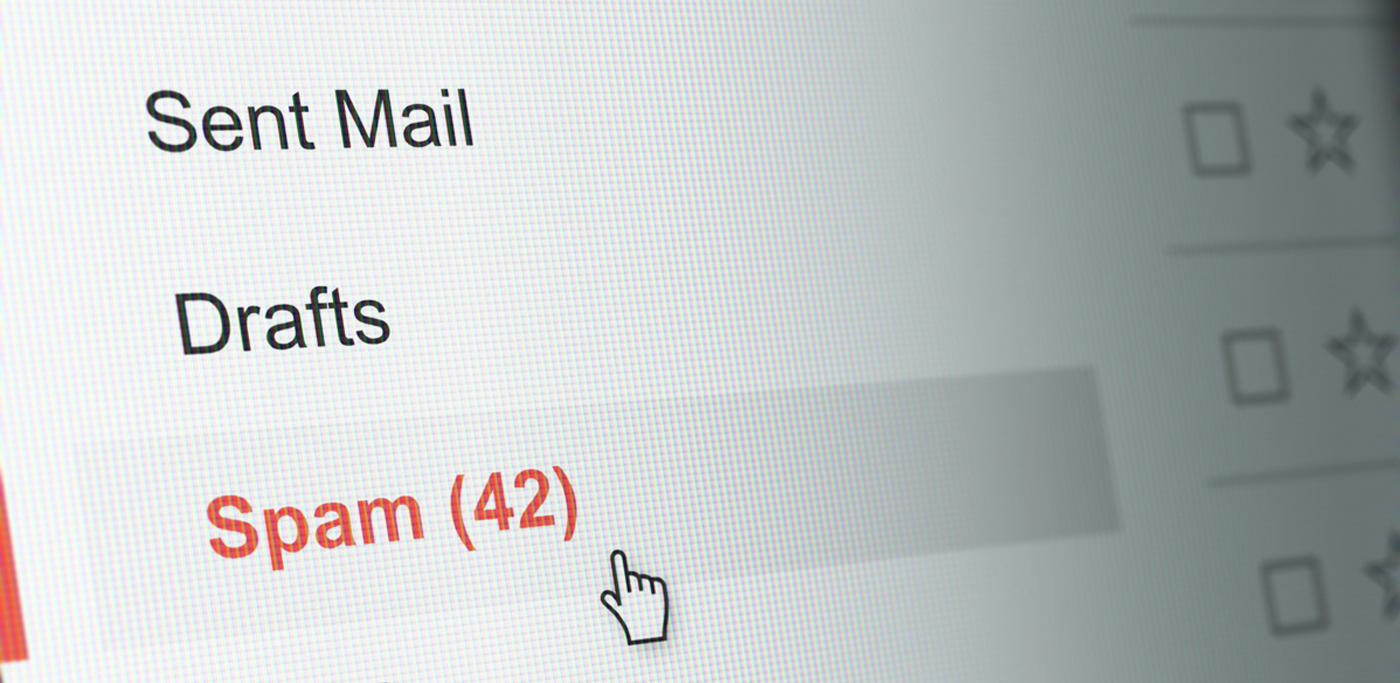Why do some emails go into inboxes and others into junk folders? Can you fix your reputation? Our Compliance Director Tim Roe explains why it’s not so straightforward.
One of the most common questions I am being asked by email marketers is “Why do our marketing emails go into one person’s inbox and into another person’s junk folder?”
The question is even more important when the email account that your email is being junked in is the organisation’s CEO!
The fact that one person’s junk is another person’s inbox, is a reflection of the way that the email clients (Outlook, Gmail etc) personalise user’s experience.
Email clients have to deal with high volumes of spam, which accounts for about 95% of the email traffic globally
As you can see, your inbox would look a quite different place if this spam were not filtered first!
As another way of reducing inbox clutter, the Email clients also try to filter out “unwanted email” from the person’s inbox.
This can be quite subjective, and a perfect solution is yet to be devised, so the junk folder can be seen as where the email client puts the emails it’s not entirely sure about.
It’s got to be remembered that the email client is trying to improve the user’s experience, even if it is at the cost of marketing emails not getting through.

So, how do email clients work out what is spam and what a user wants to receive?
In a nutshell, although it depends upon the particular email client, the following metrics are normally monitored when deciding on where to put the email.
Reputation
This is a combination of data from third parties and data that the email client collects (all or some of the metrics below). This data is used to determine if a sender is more or less likely to be sending spam, either linked to the IP address of the sender, the domain, or both.
Volume
The higher the sent volume, the more you are likely to look like a spammer. Usually, thresholds of volume are linked to reputation, so a sender with a good sending reputation can send a higher volume before going into junk than a sender with a poor reputation.
Speed of send
This is similar to the volume metric, in that a good reputation allows you to send faster than a poor reputation. With some email clients, once the threshold is reached, the email is deferred for a time period (between 12 and 72 hours) and when the block is lifted, the threshold is further reduced.
Bounce rate
Good mailers have good list hygiene and will remove email addresses that permanently bounce, or who have not responded to an email in a long time period (usually between 12 to 24 months). Spammers don’t do that, the more ‘bad’ data you send to, the more of a spammer you look.

Complaint rate
A sender that many people complain about, is more likely to go into the junk folder, than one that has few complaints.
Response rate
Looks at how often people open and click your emails, emails that are actively opened and clicked by recipients, are more likely to go into the inbox.
User reclassification
As well as emails being sent to junk being a bad vote for your email campaigns, if your recipients start to move your emails from Junk into the inbox, this is seen as a positive vote by some email clients.
Blocklist
If you send to old, inactive data, you will inevitably end up on a blocklist. This is because many of these blocklists, monitor old and inactive email addresses, that no longer solicit emails (Trap addresses). The more of these you hit, the more likely to go into junk you are.
Content filters
Email clients have developed sophisticated pattern-matching technology that scores your emails for either looking more or less like spam email. For emails that look very much like spam templates, the ISP can build a “spam signature” which will allow them to pattern match and junk any template that matches the signature.

Why is the junking so inconsistent?
Depending on the email client, these metrics either work on an individual’s mailbox or act as a default for everyone’s mailbox that there is no firm setting for.
So if an individual has added you to their safe senders list, they should generally get the email into the inbox (unless you are blocked).
If the recipient has marked your emails as junk, they will go into the junk folder (if they get them at all).
It is also possible for the default mailbox placement to change while the campaign is being sent, so it might start off in Junk, and then move to the inbox as the response data is processed by the email client.
Generally, an email will stay in whatever folder it is classified to initially, although some email clients are now able to change the folder classification, effectively moving emails from one folder to another based on the data they are monitoring.
Grey Listing
Some email clients, use a method whereby they will occasionally place emails into the junk folder. The recipient would then be expected to move the email to the inbox (if they really wanted it) or leave it in the junk folder if they believe the email is now junk.

How do I fix a poor sender reputation?
As you might have noticed, most of these metrics are designed to identify mailers who don’t care what they send out, and don’t care who they send it to.
The more wanted and welcome your emails are to your recipients, the more the data will reflect that.
Defining how to segment your data to achieve this, is the focus of many other pieces of resource on the RedEye website, but the overriding strategy should always be to base your communications on your customers themselves, only then will your email go where you want it to.
Enjoyed this article? Sign-up to receive updates




